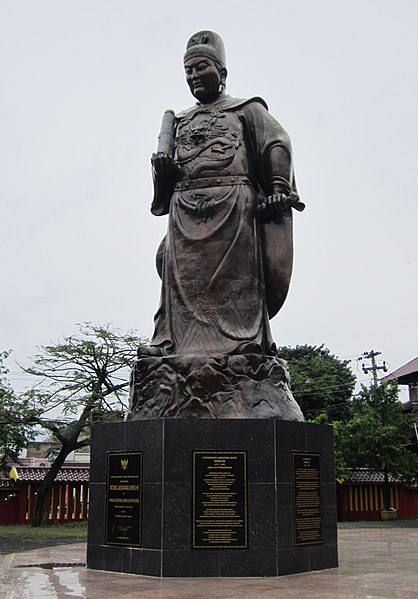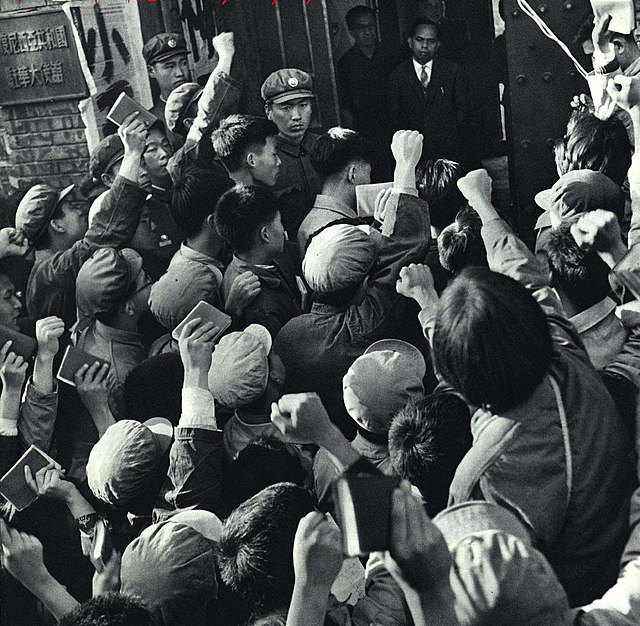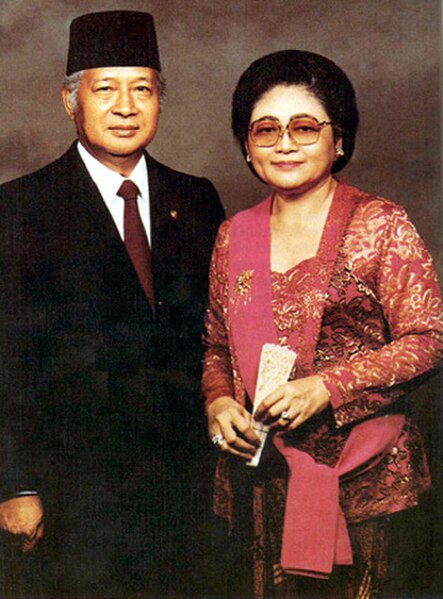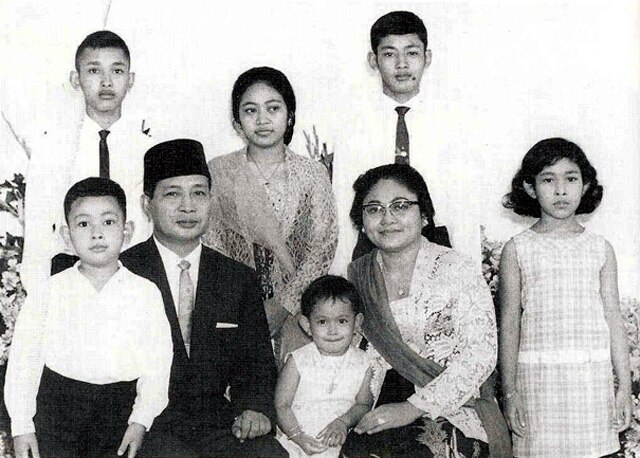China–Indonesia relations
China and Indonesia established formal diplomatic relations in 1950, more commonly referred to as Sino-Indonesian relations. Prior to this, for many centuries, the two countries maintained a variety of relations mainly in informal trade. Under Sukarno’s presidency, from 1945 to 1967, relations with China deepened, as in the early 1960s Sukarno embarked on a series of aggressive foreign policies under the rubric of anti-imperialism and personally championed the Non-Aligned Movement. These developments led to increasing friction with the West and closer relations both with China and the USSR.
The Zheng He memorial statue in Sam Poo Kong temple, Semarang, commemorate the Ming naval voyage to Indonesian archipelago.
Protest at the Indonesian embassy in Beijing in April 1967 following Suharto's assumption of presidential power
Mao Zedong and Sukarno
KCIC400AF in Halim station, East Jakarta. The Jakarta-Bandung HSR is the first Chinese overseas high-speed rail project as a prestigious example of Belt and Road Initiative
Suharto was an Indonesian military officer and politician, who served as the second and the longest serving President of Indonesia. Widely regarded as a military dictator by international observers, Suharto led Indonesia as an authoritarian regime from the fall of his predecessor Sukarno in 1967 until his resignation in 1998 following nationwide unrest. His 31-year dictatorship is considered one of the most brutal and corrupt of the 20th century, as he was central to the perpetration of mass killings against alleged communists, ethnic Chinese, irreligious people and trade unionists.
Official portrait, 1993
Lieutenant Colonel Suharto, c. 1947
Portrait of Suharto and Siti Hartinah, c. date unknown
Suharto with his wife and six children, c. 1967








